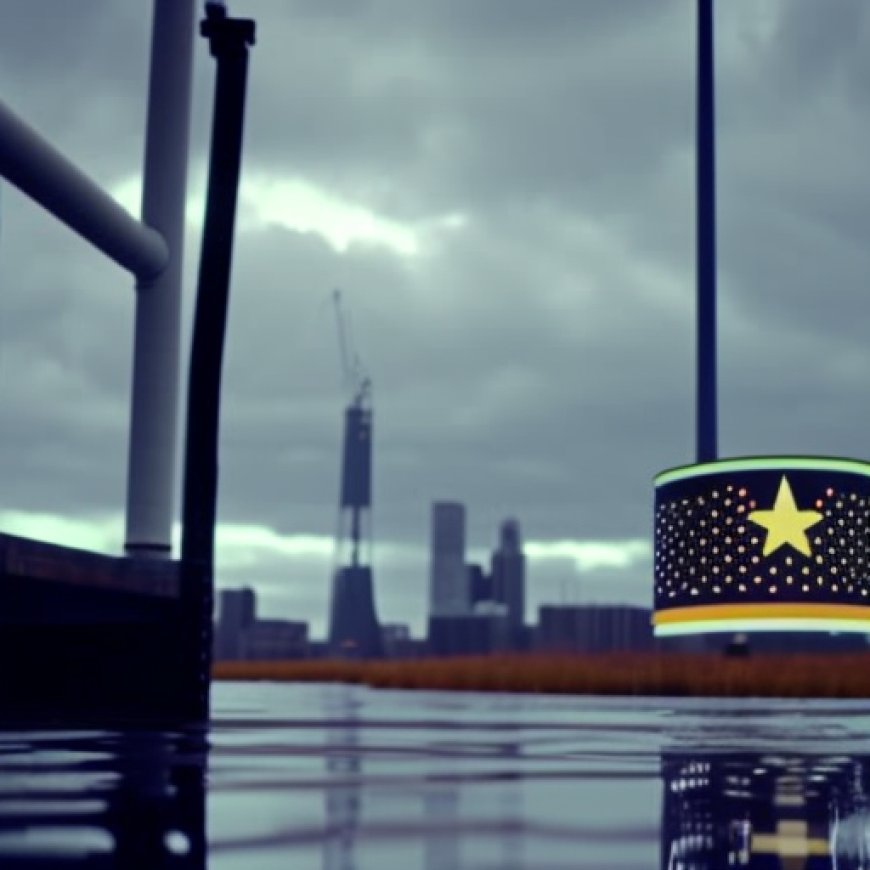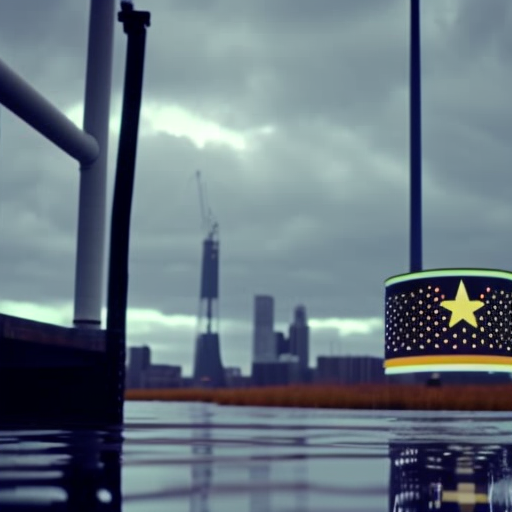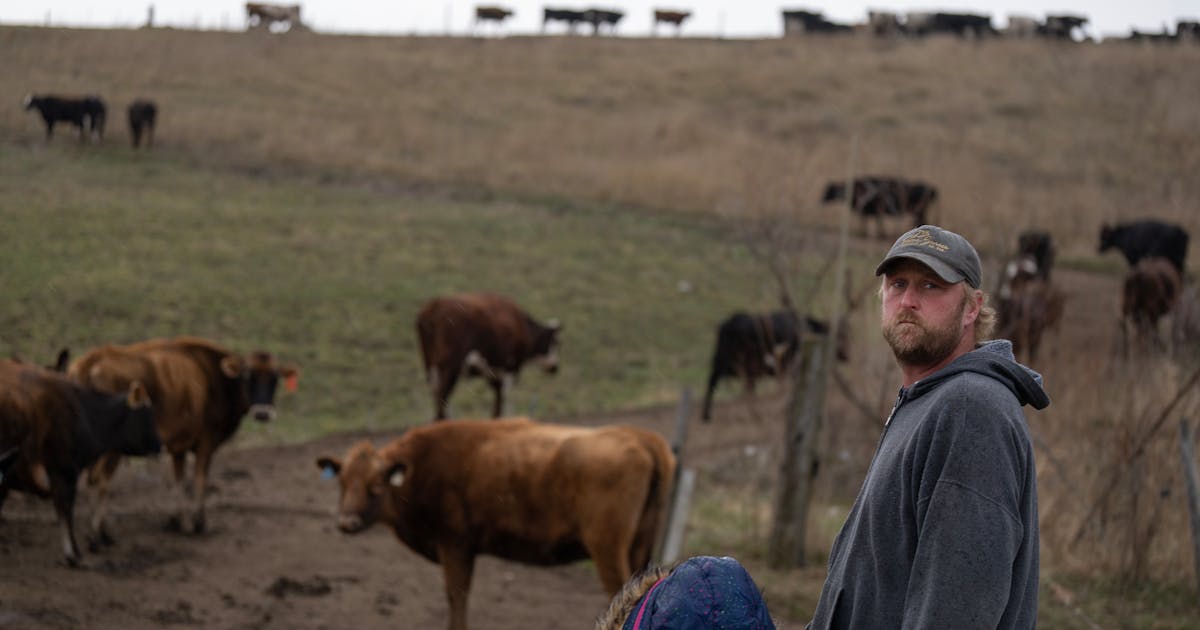’50 years of promises, all of them broken’: Southeastern Minnesotans worry over state water pollution response
'50 years of promises, all of them broken': Southeastern Minnesotans worry over state water pollution response Star Tribune



CANTON, Minn. Dairy Farm Struggles with Nitrate Pollution in Water
Introduction
Water shoots up from the hills of Vance and Bonnie Haugen’s idyllic dairy farm here in a valley close to the Iowa border. That’s why they named it Springside Farm in the ’90s.
Unfortunately, the nitrate shoots up here, too.
Nitrate levels in the Haugens’ water have steadily increased for the past 30 years, now ranging somewhere from 6 to 9 milligrams per liter of water every time they test their private well. The federal limit is 10 milligrams — any more and the pollution becomes dangerous for humans, especially infants.
Minnesota’s Promise to Address Nitrate Pollution
Minnesota promised the federal Environmental Protection Agency (EPA) in December that it would act quickly to help residents in southeast Minnesota with dangerous levels of nitrate in their wells after the EPA urged the state to take action to protect people with polluted water.
State efforts are underway to inform farmers and landowners of the dangers in their water, and agencies have put together a timeline to address the issue. But four months after the promises, Minnesota has yet to deliver clean drinking water to people most in danger. Moreover, some residents worry about how seriously the state will treat nitrate pollution in the future.
Current Actions and Funding
Starting in July, state agencies plan to provide free well testing and inventory all known private wells in the region. They’ll also provide emergency fixes in areas where nitrate pollution is highest, meaning filtration systems and possibly new wells for landowners in some cases.
All of that depends on funding. Minnesota’s Health and Agriculture departments, as well as the state Pollution Control Agency, need more than $7 million from the Legislature this session to realize those goals.
Concerns and Perspectives
The state’s efforts aren’t good enough for many of the residents who petitioned the EPA to address nitrate pollution last year. They argue that Minnesota has had decades to solve the issue but hasn’t made meaningful progress. A coalition of Winona County residents and organizations sent a letter to state leaders in February urging them to act more quickly, saying the delay in providing drinking water until summer was unacceptable.
‘An effective change’
Minnesota officials want residents to participate in well testing, apply for water deliveries, if needed, and offer input on proposed changes such as bans on winter manure and fertilizer spreads.
Some residents say the state is focusing on the wrong issues. Hydrologist Paul Wotzka said that Minnesota has taken too many “meaningless actions” that haven’t stopped farm pollution from getting worse.
Conclusion
“We’re so interrelated and I think people are finally beginning to understand this,” Bonnie said. “We’ve got to work on changing the narrative to get people to work together and make an effective change.”
SDGs, Targets, and Indicators
1. Which SDGs are addressed or connected to the issues highlighted in the article?
- SDG 6: Clean Water and Sanitation
- SDG 15: Life on Land
2. What specific targets under those SDGs can be identified based on the article’s content?
- SDG 6.3: By 2030, improve water quality by reducing pollution, eliminating dumping and minimizing release of hazardous chemicals and materials, halving the proportion of untreated wastewater, and increasing recycling and safe reuse globally.
- SDG 15.1: By 2020, ensure the conservation, restoration, and sustainable use of terrestrial and inland freshwater ecosystems and their services, in particular forests, wetlands, mountains, and drylands, in line with obligations under international agreements.
3. Are there any indicators mentioned or implied in the article that can be used to measure progress towards the identified targets?
- Nitrate levels in the Haugens’ water (indicator for SDG 6.3)
- Number of sinkholes in Fillmore County (indicator for SDG 15.1)
Table: SDGs, Targets, and Indicators
| SDGs | Targets | Indicators |
|---|---|---|
| SDG 6: Clean Water and Sanitation | 6.3: By 2030, improve water quality by reducing pollution, eliminating dumping and minimizing release of hazardous chemicals and materials, halving the proportion of untreated wastewater, and increasing recycling and safe reuse globally. | Nitrate levels in the Haugens’ water |
| SDG 15: Life on Land | 15.1: By 2020, ensure the conservation, restoration, and sustainable use of terrestrial and inland freshwater ecosystems and their services, in particular forests, wetlands, mountains, and drylands, in line with obligations under international agreements. | Number of sinkholes in Fillmore County |
Behold! This splendid article springs forth from the wellspring of knowledge, shaped by a wondrous proprietary AI technology that delved into a vast ocean of data, illuminating the path towards the Sustainable Development Goals. Remember that all rights are reserved by SDG Investors LLC, empowering us to champion progress together.
Source: startribune.com

Join us, as fellow seekers of change, on a transformative journey at https://sdgtalks.ai/welcome, where you can become a member and actively contribute to shaping a brighter future.







